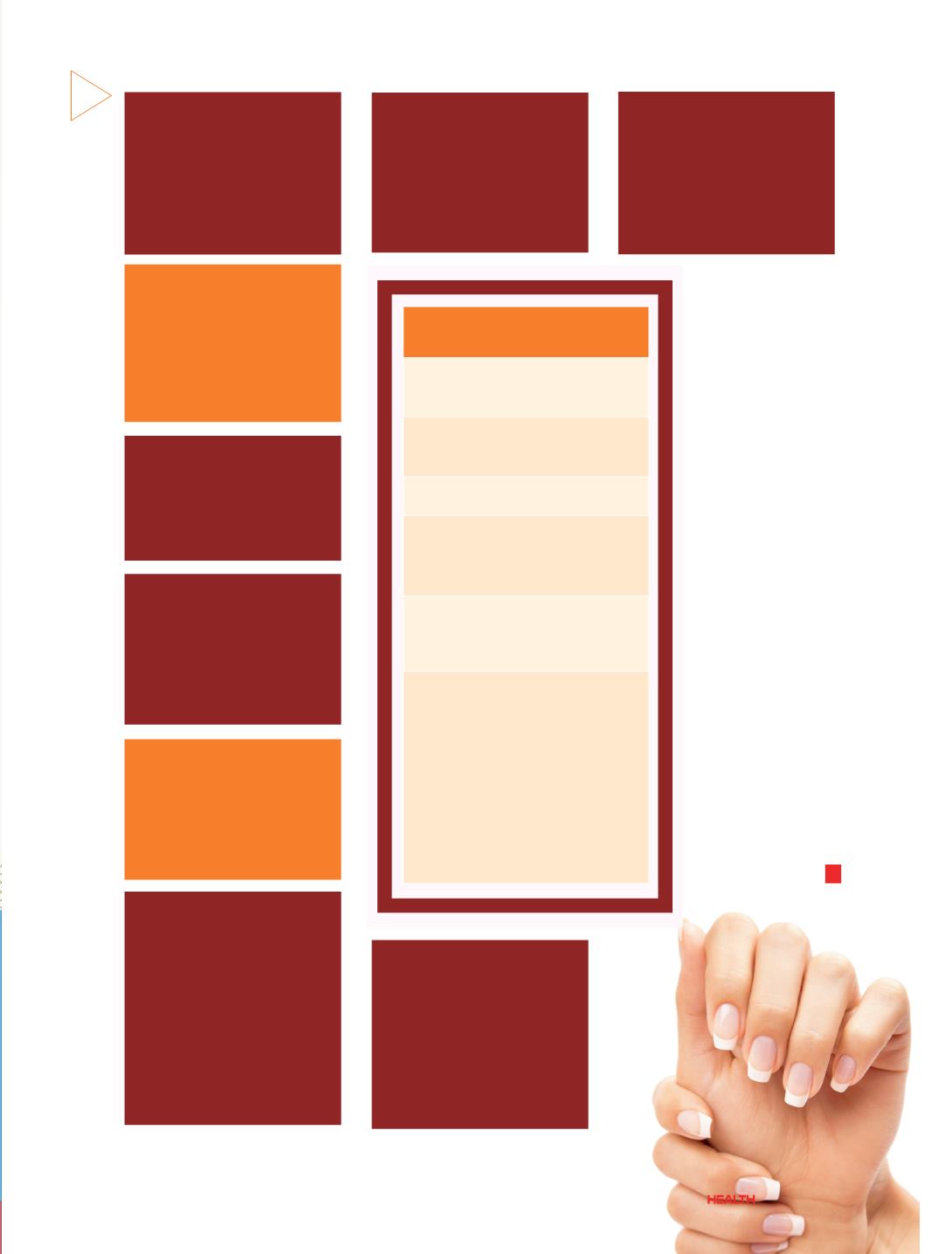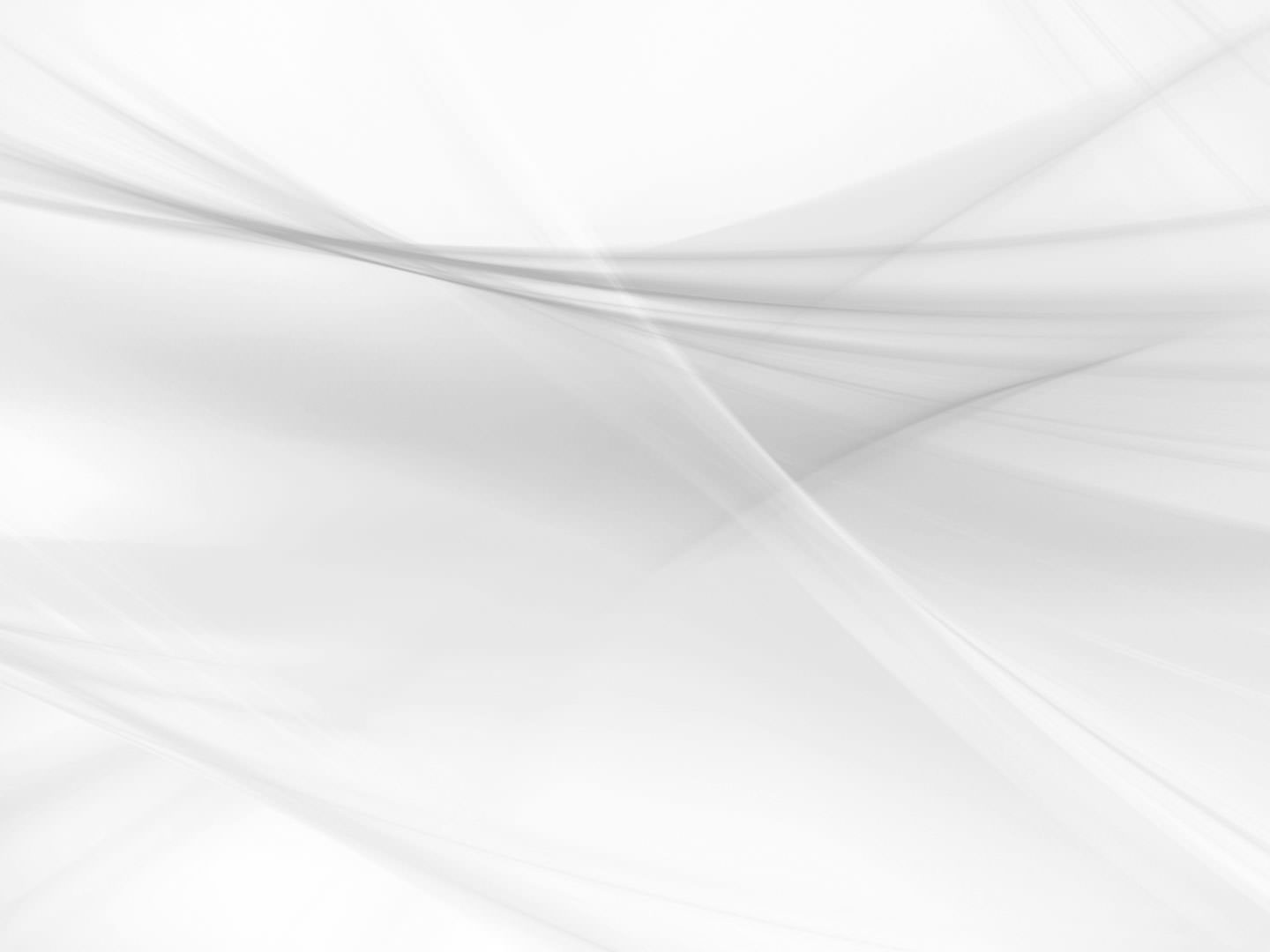

Beau’s Lines
These are transverse depressions
of the nail plate, secondary
to disruption of nail plate
formation by the nail matrix
and usually induced by systemic
illness/insult.
Median Nail Dystrophy
Dr. Markandeya explains that
this is defined as a pattern
of grooving in the nail, from
the Proximal Nail fold to the
distal edge of the nail plate, in a
Christmas-tree pattern.
Trachyonychia
These are nails with a rough,
ridged surface and are associated
with alopecia areata, lichen
planus, psoriasis, and eczema.
Pitting
These are small circular
defects in the nail plate which
Dr. Markandeya explains are
associated with alopecia areata,
psoriasis and eczema.
Pachyonychia
This is a thickening of the
entire nail plate often seen in
pachyonychia congenita, an
inherited disease with “door-
wedge”-shaped nails.
Melanonychia
This is defined as brown
dyschromia of the nail plate
and has many causes, although
most commonly in patients with
pigmented skin. “Hutchinson’s
sign, the extension of pigment
on to the nail folds and/or
hyponychium, raises the concern
for melanoma,” explains Dr.
Markandeya.
Yellow-Nail Syndrome
This is a yellow discoloration
of the nails associated with
pulmonary disease however Dr.
Markandeya explains that it may
be normal in some individuals.
Nail-Patella Syndrome
An autosomal-dominant genetic
syndrome with triangular
lunulae, absent patellae, and iliac
horns, Dr. Markandeya explains
that this is associated with renal
abnormalities.
Onychocryptosis
This is a case of ingrown nails
usually caused by improper nail
clipping while pincer nails are an
over curvature of the distal nail
plate which can be hereditary or
acquired.
Others
Others include
Onychorrhexis (the splitting
of the distal nail plate),
Pterygium (a growth of
tissue from the Proximal
Nail Fold to the nail
bed), Pterygium inversus
unguium (a growth of tissue
from the ventral nail plate to
the nail bed), Onycholysis
(the detachment of the nail
plate from the nail bed), and
Paronychia (inflammation/
infection of the nail folds).
Reaction or
Allergies
The chemicals in nail
polish, dyes and adhesives,
points out Dr. Markandeya,
can induce damage to the
nail plate in the form of
discoloration, brittleness,
irritant or allergic contact
dermatitis (seen in area
surrounding nail). “Early
detection of the problem,
avoiding the allergen
or use of appropriate
protective devices is the
basis of management of this
condition,” she says.
(Credit: Dr. Markandeya)
Tips to Caring For
Your Nails
Trim nails regularly to avoid
chipping at the edges.
Cut nails straight, not curved,
to prevent ingrowing nails.
Use mild soaps to wash hands.
Use mild detergents or
soaps for washing clothes
and for cleaning dishes.
Avoid repeated immersion
of the hands in soap and
water.
Use moisturizers for hands
and over nails regularly
especially after washing
and at night before going
to sleep. Application of a
petroleum jelly preparation
on wet nails at bedtime
helps to retain the moisture
in the nail plate.
H
23
May/June 2015















